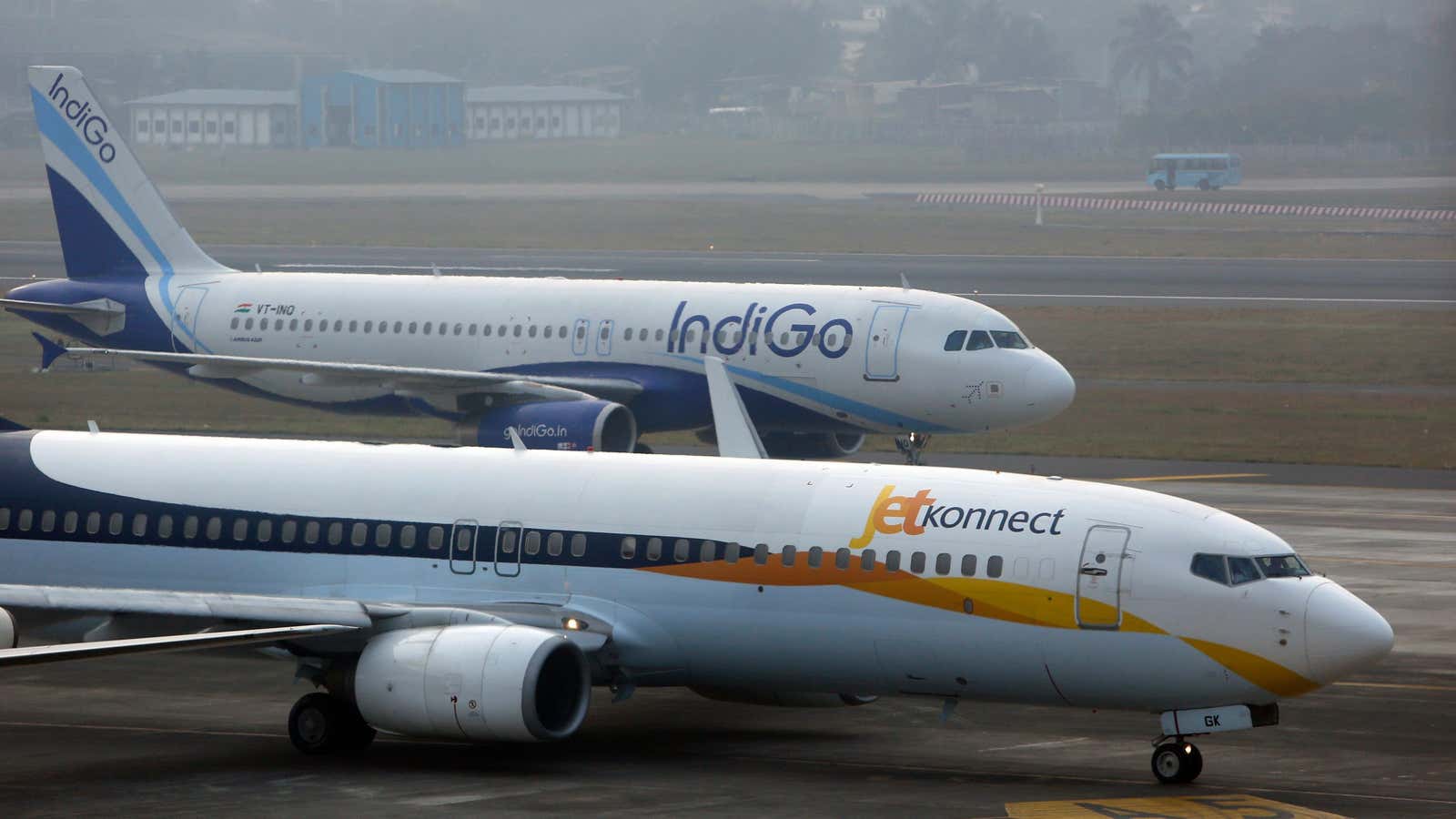India’s surging aviation growth has a flip side—its airports are overwhelmed.
For instance, the Kempegowda International Airport in the southern city of Bengaluru handled 27 million passengers in 2017-18 and is now expecting a 70% surge in passenger traffic over two years. The airport, India’s third busiest, also expects passenger traffic to triple in the next 10 years.
To cope, the Bangalore International Airport Authority (BIAL), which owns and operates the facility, on Thursday (Jan. 10), announced a $2-billion (Rs14,000 crore) investment plan that will see the addition of a new terminal and a second runway.
With the new terminal, the airport will be able to handle 45 million passengers a year, Hari Marar, CEO of BIAL, said at a press conference yesterday (Thursday). The second runway is equipped to handle bigger planes like Airbus’s A380s and can operate in near zero visibility, added Marar.
Other major Indian airports, too, are bursting at the seams.
The ones in Mumbai, Hyderabad, Ahmedabad, and Pune are saturated, while Delhi, Kolkata, Chennai, Goa, and Lucknow will soon reach maximum capacity. At least 25 of India’s 50 busiest airports are overloaded; the remaining will reach optimal capacity this year, documents accessed by the Hindustan Times daily show.
Traffic takes flight
The number of passengers carried by domestic airlines in the January-November period last year stood at 126 million, up 19.21% year-on-year, according to India’s directorate general of civil aviation (DGCA).
In the current financial year, India’s aviation sector is expected to continue growing at near 20% and passenger volume is expected to cross the 150 million mark by March 31, 2019, according to a recent report by the Centre for Asia Pacific Aviation (CAPA), a firm specialising in aviation and travel data.
In June 2018, the domestic aviation market recorded its 46th consecutive month of double-digit year-on-year growth which is not expected to end anytime soon, according to a report by the International Air Transport Association (IATA), a global trade association of airlines.
Keeping this boom in mind, India’s cabinet committee on economic affairs had in May approved investments for expansion and upgradation of terminals in Chennai, Guwahati, and Lucknow by the Airports Authority of India.
New international airports, with world-class features, are also on the anvil. The Airports Authority of India (AAI) is expected to pump in Rs400 crore for the expansion of the Goa International Airport. Civil aviation minister Suresh Prabhu had said in September that India would be undertaking construction of 100 airports worth $60 billion in the next 10-15 years.
In some of the big cities, multiple airports have already been approved.
Mumbai is set to get one in Navi Mumbai and Noida International will be the second one in Delhi, while Goa, Pune, and Ahmedabad are also set to get their second airports.
